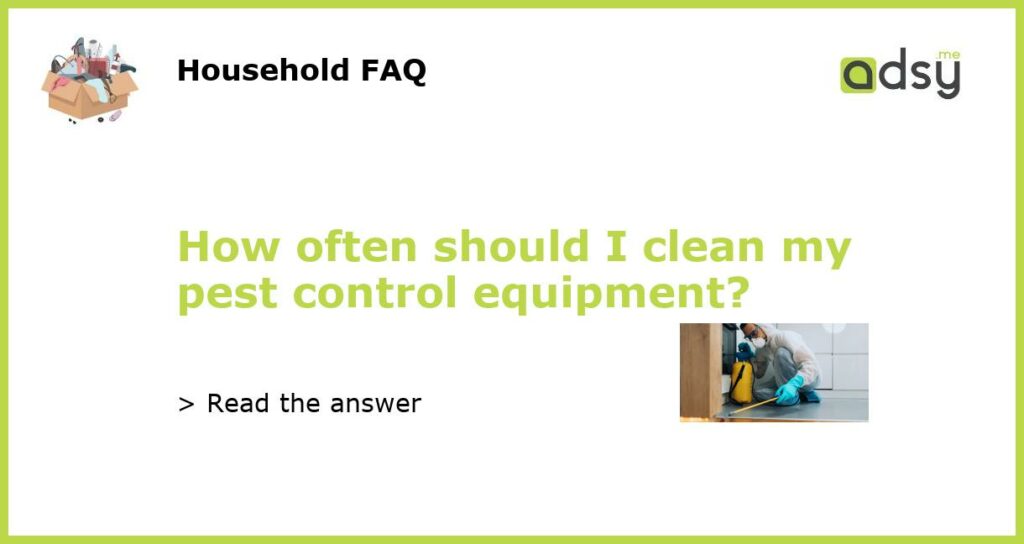Why Regular Cleaning of Pest Control Equipment is Crucial
Regular cleaning of pest control equipment is essential for several reasons. Firstly, it helps to maintain the effectiveness of the equipment and ensures that it functions properly when you need it most. Secondly, clean equipment reduces the risk of cross-contamination and the spread of pests and diseases. Lastly, proper cleaning and maintenance can extend the lifespan of your pest control equipment, saving you money in the long run.
Factors to Consider in Establishing Cleaning Frequency
The frequency at which you should clean your pest control equipment depends on several factors. The type of equipment, its usage, and the types of pests being targeted all play a role in determining the appropriate cleaning frequency. It is also important to consider any regulations or guidelines set by the relevant authorities or your equipment manufacturer.
General Guidelines for Cleaning Pest Control Equipment
While the specific cleaning requirements for each type of pest control equipment may vary, there are some general guidelines you can follow. Firstly, always read the manufacturer’s instructions for cleaning and maintenance. These instructions will provide valuable information on the specific cleaning methods and products that are safe to use on the equipment. Secondly, it is recommended to clean your equipment after each use to remove any residue or debris that may have accumulated. Proper cleaning may involve disassembling different parts of the equipment, such as nozzles or filters, and thoroughly washing them with soap and water. Lastly, ensure that all components are completely dry before reassembling and storing the equipment to prevent the growth of mold or bacteria.
Specific Cleaning Frequencies for Common Pest Control Equipment
The cleaning frequencies for different types of pest control equipment can vary. Here are some general guidelines:
Sprayers and Applicators:
Sprayers and applicators, such as backpack sprayers or fogging machines, should be cleaned after each use to prevent clogs and maintain their effectiveness. Rinse the tank and all hoses with clean water to remove any pesticide residue. For more thorough cleaning, you may need to disassemble and clean the nozzles and filters according to the manufacturer’s instructions.
Bait Stations and Traps:
Bait stations and traps should be inspected regularly and cleaned as needed. Remove any dead pests, debris, or spoiled bait from the stations. Clean the inside of the station with soap and water, and ensure it is completely dry before adding fresh bait. This will help maintain the effectiveness of the stations and prevent cross-contamination.
Rodent Control Equipment:
Rodent control equipment, such as traps or bait stations, should be checked regularly and cleaned as necessary. Remove any trapped rodents or spoiled bait from the equipment. Clean the equipment with soap and water, and ensure it is completely dry before reusing or re-baiting.
Protective Clothing and Personal Protective Equipment (PPE):
Protective clothing, such as gloves, coveralls, and respirators, should be cleaned after each use. Follow the manufacturer’s instructions for cleaning and maintenance. Additionally, it is important to regularly inspect PPE for any signs of damage or wear and replace as necessary to ensure optimal protection.
Regular cleaning of pest control equipment is crucial for its effectiveness, preventing cross-contamination, and extending its lifespan. The appropriate cleaning frequency depends on factors such as the type of equipment, its usage, and the types of pests being targeted. It is important to follow the manufacturer’s instructions and any relevant regulations or guidelines for cleaning and maintenance. By properly cleaning and maintaining your pest control equipment, you can ensure its optimal performance and protect your investment.

